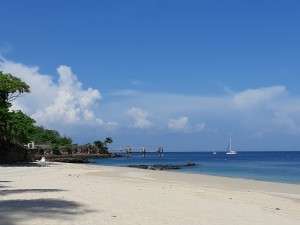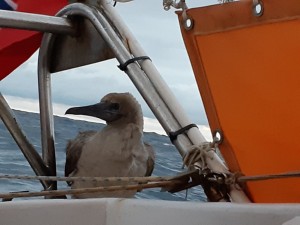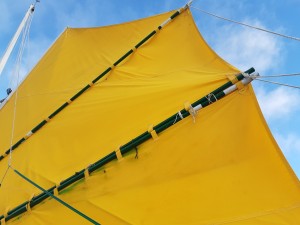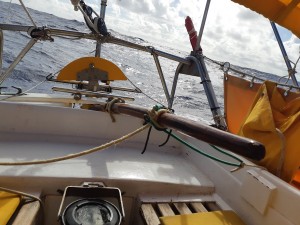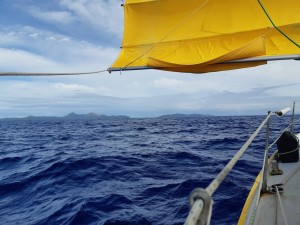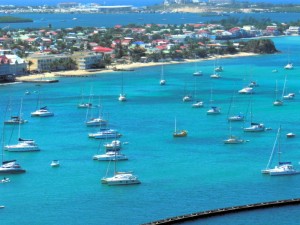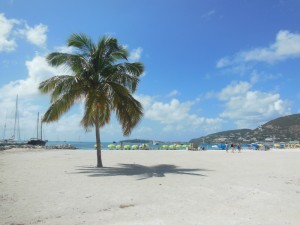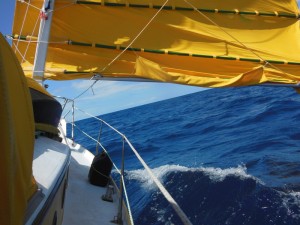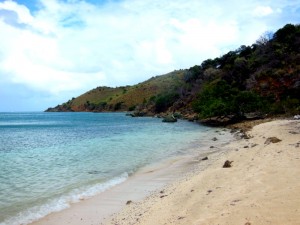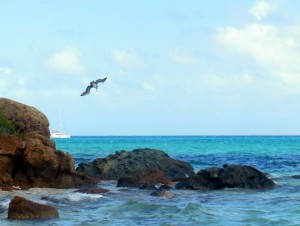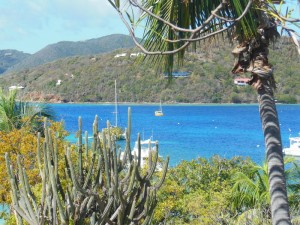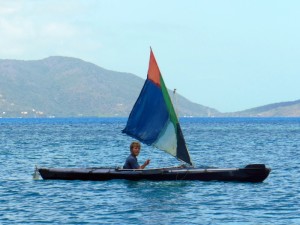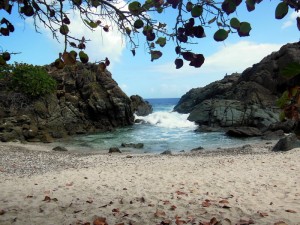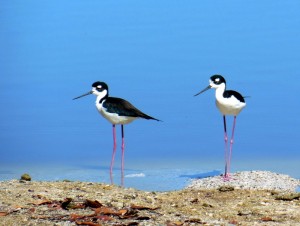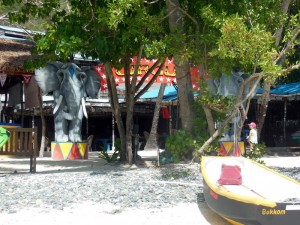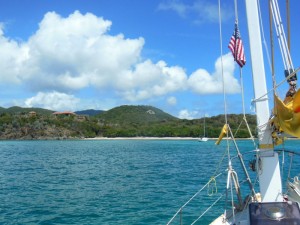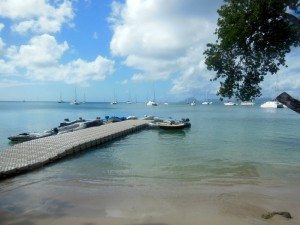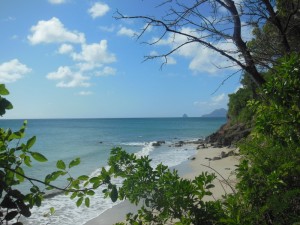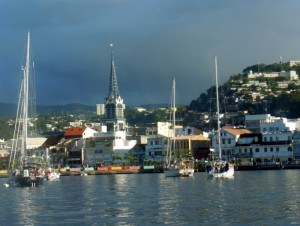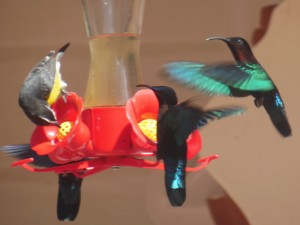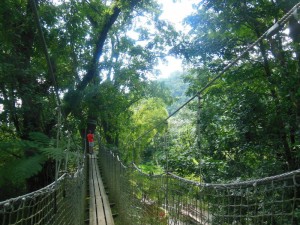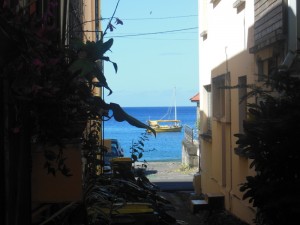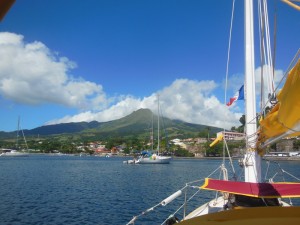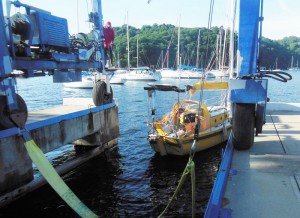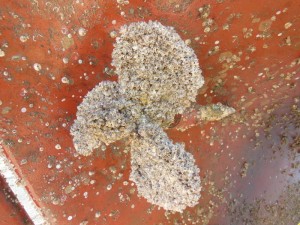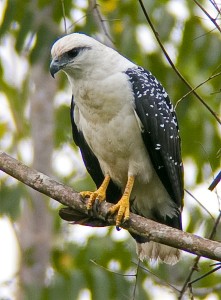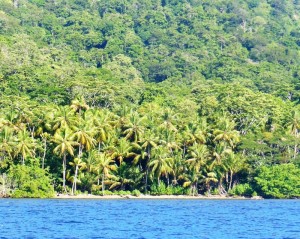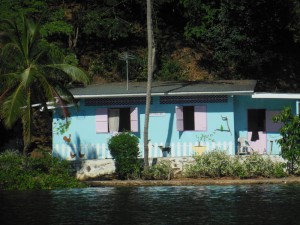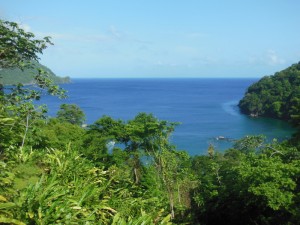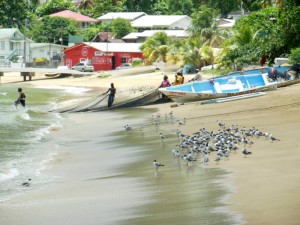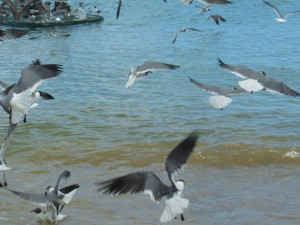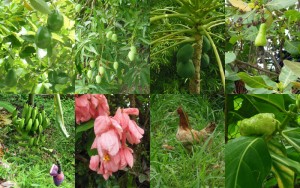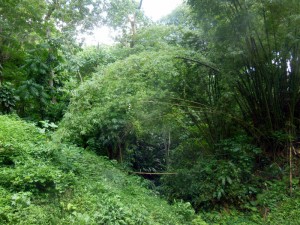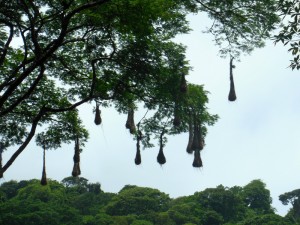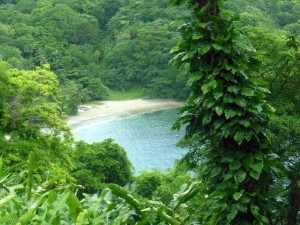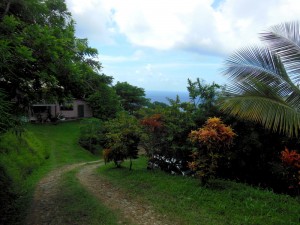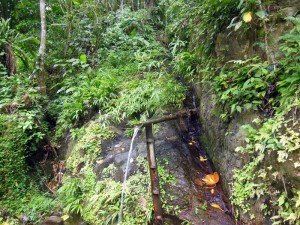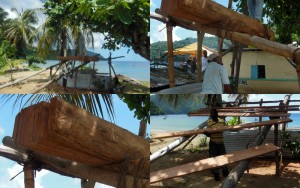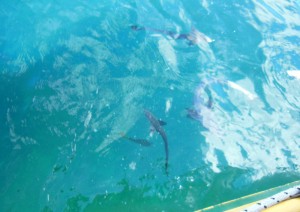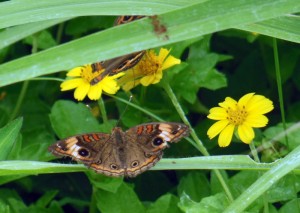On to Colombia
Wednesday, May 10th, 2017
I had read so many dire warnings about the rough sea conditions along the NE coast of Colombia that I was feeling rather anxious about starting out. I had a reasonable weather forecast but in order to reach my first safe harbour at Cabo de la Vela, 500 miles away, in good weather, I would have to be able to maintain at least 100 nm per day. Seeing as I usually estimate my trip times using an average speed of 3knots I would have to push it. When I left Ponce the wind was about 15-20 knots from the East. We raced along with the wind on the beam, despite a rough and bouncy sea. The ocean swell rolls in from the NE and crosses the wind waves coming from the east causing nasty confused water. I took a seasick pill just to be safe. The first day went well and we managed to maintain an average speed of 5knots. It was looking good. But the strong conditions were starting to take a toll on the rig. Over the next 3 days I had to heave-to four times in order to fix small breakages: two batten attachment lashings chafed through on separate occasions, a stitched tab for the attachment on yet another batten pulled apart, a small saddle screwed to the boom for the tack line came adrift. Each time I needed to clip on and only use one hand to replace lashings, stitching or screws while trying to ignore the rather exciting movement of the boat and hang on for dear life with the other. Once again I was thankful for the ease with which it is possible to heave-to with Speedwell.
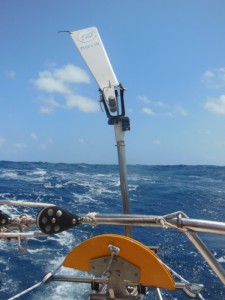
The Navik back in action
A rather more serious breakage happened just before sunset on day 3. I was below taking a short rest and the movement was quite rough but steady. Suddenly I felt a change and things seemed ominously quiet. Then we suddenly gybed. I dashed up on deck to see what had happened and to my dismay saw that the long connecting rod on the Navik self-steering gear had come adrift. Oh well, it had happened before and fortunately I had a spare. So we hove-to once again and I perched on the stern rail and unscrewed the Navik to bring it inside. Fortunately I was able to remember where I had stowed the spare and we were soon back in action again. I thanked my lucky stars that all these mishaps had occurred during daylight hours.
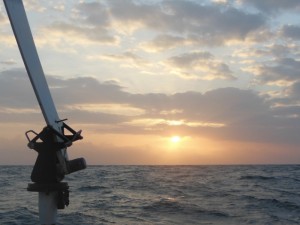
Dawn approaching Cabo de la Vela
Day 4 and we were approaching the other side. It might be possible to stop at Aruba if the weather turned nasty but I really didn’t want to have to to this, as they feel that South Africans should have a visa (which I don’t have) and their harbour fees are exorbitant. I steered towards the small Archipelago of Monjes which is part of Venezuela and could provide refuge in extremis. But things didn’t look too bad so I bravely kept going, heading along the coast of the Guajira peninsula. There was a fairly big swell but nothing too horrendous. As the sun came up we rounded Cabo de la Vela and anchored in the flat water of Ensenada Huaritcheru. Fishermen were out in their open boats. It was a beautiful scene.
I tidied up the sail and had a few hours sleep.
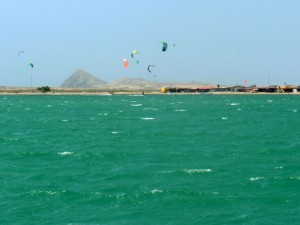
Kite boarders out in the strong afternoon wind
It was too windy to even think about rowing ashore so I spent the rest of the day sorting things out aboard. Kite boarders were enjoying the breeze and the flat water. Some whizzed by really close to have a look at us. We were the only cruising boat there. What a change from the Caribbean.
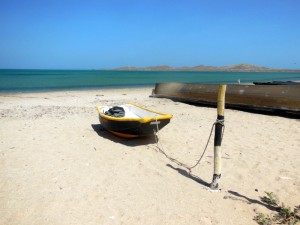
A perfect beach for Bokkom
Next morning it was flat calm. I got the dinghy in the water and took the opportunity to row ashore. A perfect beach for landing with no waves breaking. I took a long walk along the water’s edge. I hadn’t expected to arrive in a desert area. I imagined Colombia to be all tropical rain forest and lush greenery. This was amazing. Wonderful dry air for a change. There are a lot of simple shelters all along the beach, mostly open sided with palm thatched roofs and posts for slinging hammocks. All catering for visitors and weekenders coming to enjoy the superb kite-boarding conditions. A narrow sandy track follows the coastline.
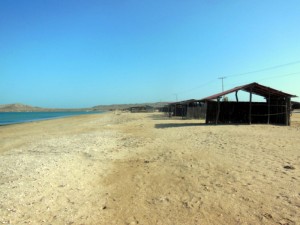
A deserted desert beach
Every now and then I stopped to watch the local Wayuu Indian fishermen and their families busily cleaning the morning’s catch. Any bits and pieces left on the sand were quickly taken care of by the Crested Caracaras that looked on expectantly. Everyone seemed friendly and identified me with the little yellow boat anchored in the bay. One of them wanted to swap hats with me. He had a rather splendid panama job but I’m attached to my special hat and couldn’t bring myself to give it up. No offence. Thumbs up sign. On I wander.
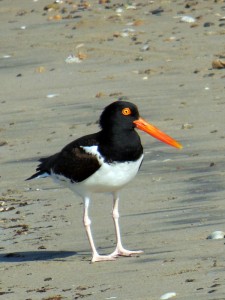
An oystercatcher gives me the eye
Further along I spotted a beautiful American Oystercatcher being followed by a little sanderling and a pair of turnstones. Next there was a gaggle(?) of cormorants who took to the water when I came too close. Pelicans were fishing a short way off and there were terns and frigatebirds. Oh, why hadn’t I brought my binoculars?
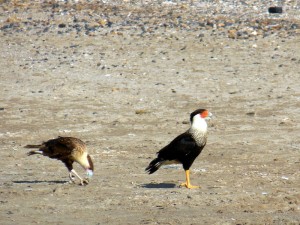
Caracaras cleaning up after the fishermen
I was tempted to keep walking and visit the lighthouse up on the hill, but the wind was picking up again and whitecaps were starting to appear on the water. Time to head back. It would be a fast downwind row and heaven help me if I got blown past the boat. Apparently, this is the normal daily pattern – the wind picks up really strongly starting at about 11am reaching a peak around 2-3 in the afternoon and then dying down again at night. Nevertheless, the bay provided a very comfortable anchorage completely protected from the swell.
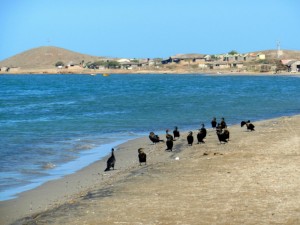
Huaraticheru Bay with cormorants
